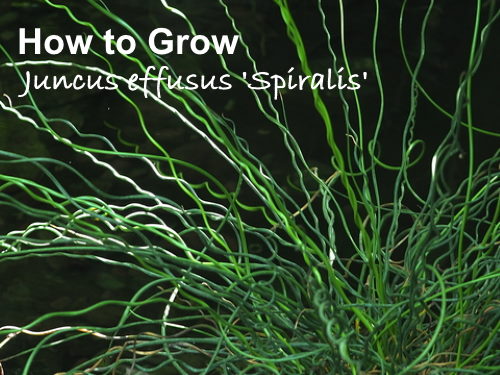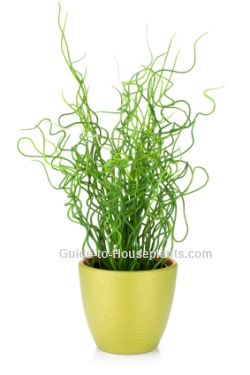Juncus Effusus 'Spiralis'
Botanical Name: Juncus effusus 'Spiralis'
Corkscrew rush (sometimes called Juncus spiralis) is a novelty cultivar with captivating coiled stems, spreading out in every direction as they grow.
In this guide, you'll get tips for growing Juncus effusus 'Spiralis' indoors. Find out how to grow this ornamental grass in a container and keep it thriving year-round.

Why You Want to Grow it as a Houseplant
If you like unusual indoor plants, you'll want to add this spectacular ornamental to your collection. Stunning on its own, corkscrew rush also adds some sizzle among a display of leafy and flowering plants. In fact, those curly-Q stems are sometimes used in florists' bouquets.
Perennial and evergreen, this is an easy-care house plant. It adds a lot of personality to a room for little effort.
Juncus Effusus 'Spiralis': 3 Keys to Success
- Water generously. Constantly wet soil is needed to keep Juncus effusus 'Spiralis' healthy and thriving. Don't allow the soil to dry out. Foliage will turn yellow then brown if it gets too dry. It's a good idea to keep your corkscrew rush plant in a pot without a drainage hole. Juncus is native to marsh areas, so it loves soggy soil -- even standing water.
- Shed some light. Put your Juncus plant in your sunniest window -- or shift it outdoors for the spring and summer. It will tolerate lower light levels, but won't grow much. If you don't have a spot near a window, grow lights work beautifully.
- Repot in spring, moving up to a container 1 size larger when it becomes crowded. Juncus is fast-growing when it gets the sunlight and water it wants. You may need to divide it every spring.

Juncus Effusus 'Spiralis' Care Tips
Origin: 'Spiralis' is a cultivar of Juncus effusus, native to Japan.
Height: 2-3 ft (60-90 cm)
Light: Give it as much full sun as you can. It will tolerate some indirect light, but won't thrive without some bright direct sunlight.
Water: Keep the soil wet at all times -- standing water is ideal. Native to marshlands, this is one plant you can't overwater.
Humidity: Try to maintain 40-50% relative humidity. Discover easy ways to increase humidity around your plant.
Temperature: Average to warm room temperatures (65-80°F/18-27°C) year-round. If you put this tender ornamental out on the patio for the summer, don't worry -- it can take the heat. Bring the plant back in when the temperature drops in autumn. It won't tolerate frost.
Soil: Peat moss-based potting mix, such as African violet mix.
Fertilizer: Feed once a month spring through fall with a balanced (such as 10-10-10 NPK) liquid or water-soluble fertilizer. Stop feeding in winter, when growth is slow.
Propagation: Juncus effusus 'Spiralis' grows offsets around the parent plant, making it easy to divide. Spring is the best time to propagate the offsets because the plants are beginning their most vigorous time of growth. To divide them, pull the plant out of the pot. Gently pull the fleshy roots apart or cut through them with a knife; then pot separately.


